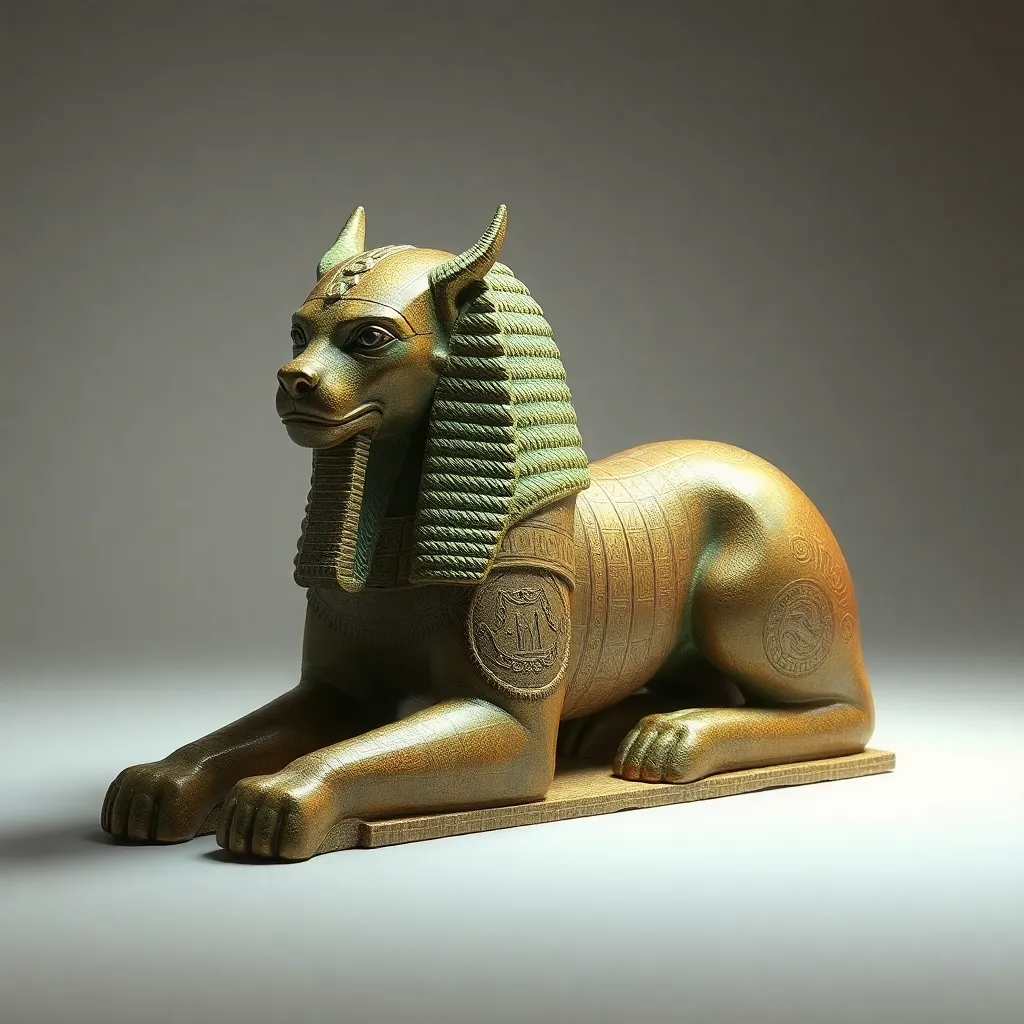Ammit’s Influence on Egyptian Funerary Practices
I. Introduction
Ammit, often referred to as the “Devourer of the Dead,” is a significant figure in ancient Egyptian mythology. This fearsome creature symbolizes the consequences of a life lived in sin, and her role in the afterlife is crucial to understanding the beliefs surrounding judgment and morality in ancient Egypt. Funerary practices in this civilization were not merely rituals; they were deeply rooted in the belief system that governed their understanding of life, death, and the afterlife.
The aim of this article is to examine Ammit’s role in Egyptian funerary practices, highlighting her significance in the judgment of souls and the broader implications for Egyptian beliefs regarding the afterlife.
II. The Mythological Background of Ammit
Ammit is often depicted as a composite creature, featuring the head of a crocodile, the body of a lion, and the hindquarters of a hippopotamus. This unique portrayal symbolizes her ferocity and the danger she poses to souls deemed unworthy in the afterlife. She resides in the Hall of Judgment, where the fate of the deceased is determined.
In the context of the afterlife, Ammit plays a pivotal role in the judgment of souls. After death, it is believed that the deceased’s heart is weighed against the feather of Ma’at, the goddess of truth and justice. If the heart, representing the individual’s deeds in life, is heavier than the feather, Ammit is there to devour it, condemning the soul to eternal unrest.
Her connection to other deities, such as Anubis, the god of embalming and the protector of graves, and Osiris, the god of the afterlife, emphasizes her critical role in the cycle of death and rebirth. Anubis oversees the weighing of the heart, while Osiris governs the realm of the dead, creating a network of divine oversight in the afterlife.
III. The Concept of the Weighing of the Heart
The weighing of the heart is a central theme in ancient Egyptian beliefs regarding the afterlife. This process involves several key elements:
- The deceased’s heart is placed on one side of a scale.
- The feather of Ma’at is placed on the other side.
- If the heart is lighter or equal in weight to the feather, the soul is deemed worthy and can enter the afterlife.
- If the heart is heavier, Ammit consumes it, and the soul is condemned.
In this belief system, the heart is considered the seat of the soul, containing the essence of one’s character and actions throughout life. Ammit’s presence in this judgment process illustrates the consequences of moral failure and the importance of leading a righteous life.
IV. Funerary Rituals and Practices
The funerary customs of ancient Egypt were elaborate and rich with symbolism. Traditional practices included:
- Embalming the body to preserve it for the afterlife.
- Burial in tombs adorned with offerings and inscriptions.
- Conducting rituals to guide the deceased through the afterlife.
Burial offerings were significant, as they were believed to provide sustenance in the afterlife. Tomb construction was also a reflection of one’s status in life, with elaborate tombs reserved for pharaohs and wealthy individuals.
The beliefs surrounding Ammit deeply influenced these practices, as the fear of her devouring an unworthy soul motivated individuals to lead virtuous lives and ensured that funerary practices were performed correctly to honor the deceased. The presence of Ammit in these customs served as a constant reminder of the moral weight of one’s actions.
V. Symbolism of Ammit in Funerary Art
Ammit’s representation in ancient Egyptian art serves as a powerful symbol of morality and the afterlife. Common forms of artistic expression featuring Ammit include:
- Wall carvings in tombs depicting the weighing of the heart.
- Statues showcasing her fearsome features.
- Paintings illustrating the judgment scene, with Ammit ready to devour the unworthy.
These artifacts and inscriptions reflect societal views on morality, emphasizing the importance of living a just life. They also served to reinforce the cultural narrative surrounding the afterlife, instilling a sense of accountability in individuals regarding their actions.
VI. Ammit’s Influence on Burial Customs
Ammit’s influence on funerary practices is evident in several ways:
- Beliefs about Ammit led to heightened emphasis on proper burial rituals, ensuring that the deceased was treated with respect and honor.
- The preparation of the deceased’s body became a meticulous process, aiming to protect the soul from Ammit’s judgment.
- Communities often incorporated symbols of Ammit into their burial customs, such as amulets or inscriptions that invoked protection against her.
These practices highlight the collective consciousness of ancient Egyptian society regarding morality and the afterlife, as well as the communal effort to guide souls toward a favorable judgment.
VII. Legacy of Ammit in Later Egyptian Beliefs
Ammit’s influence extended beyond her immediate cultural context, impacting subsequent religious practices and beliefs in Egypt and beyond. Her role in the judgment of souls has parallels in other cultures, emphasizing the universality of the themes of morality and the afterlife.
Comparative studies have shown that many ancient civilizations had similar concepts of judgment and retribution in the afterlife, such as:
- The Greek concept of Hades and the judgment of souls.
- The Christian idea of Heaven and Hell.
- The Zoroastrian belief in the weighing of souls.
Ammit’s legacy continues to be explored in modern interpretations of Egyptian mythology, where she is often portrayed as a symbol of justice and moral consequence.
VIII. Conclusion
In summary, Ammit plays a critical role in shaping funerary practices in ancient Egypt. Her function as the Devourer of the Dead serves as a powerful reminder of the consequences of one’s actions in life, influencing both individual behavior and societal customs.
Understanding the mythology surrounding Ammit and her impact on funerary practices deepens our appreciation of the cultural contexts that shaped ancient Egyptian beliefs. As we reflect on Ammit’s lasting influence, we recognize the profound ways in which mythology informs our understanding of morality, judgment, and the afterlife.




